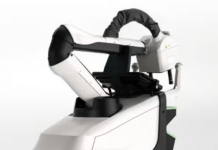Orthobond has secured FDA de novo approval for its Ostaguard antibacterial technology that could one day be used for a wide range of medical devices — and beyond medtech. The Monmouth Junction, New Jersey-based device developer says it’s the first time the FDA has granted a de novo request for a non-eluting coating designed to actively kill bacteria that could contaminate the surface of a medical device.
Related: SpineX eyes FDA submission as neurogenic bladder trial hits milestone
Orthobond was founded by Princeton University Chemistry Professor Emeritus Jeffrey Schwartz and the late Dr. Gregory Lutz, who was physiatrist-in-chief emeritus at the Hospital for Special Surgery. Lutz died of cancer on March 5, but knew FDA approval was on the horizon.
Orthobond CEO David Nichols called the FDA approval a “testament to Gregory’s legacy” in a statement shared with MassDevice. “We are proud to be able to carry it on into this next chapter.”
The first application will be Ostaguard-treated SeaSpine Mariner pedicle screws, according to FDA records. Those could be used in patients early next year, Nichols (a former Zimmer Biomet executive) said in an exclusive interview with MassDevice.
Orthobond also worked with Onkos Surgical to coat another device that has won FDA de novo approval.
Orthobond’s proprietary technology is a quaternary ammonium compound coating that’s highly effective in neutralizing the different bacteria responsible for most device-related infections and can be applied to almost any device, he said.
The Ostaguard method permanently modifies the surface of a device to mechanically rupture the cell walls of bacteria, viruses and fungi. When present in the operating room, those infection-causing microbes sometimes end up on an implant after it’s been removed from its sterile packaging or when it’s being placed inside a patient.
Unlike antibiotic-eluting devices, Ostaguard doesn’t use antibiotics so there’s no risk of creating drug-resistant superbugs. And while antimicrobial materials like silver, palladium and copper can kill bacteria, those toxic metals aren’t biocompatible with human tissue, Nichols said.
“Those have been the barriers for decades,” he said. “[Ostaguard] is a brand new category for the FDA. It doesn’t come off the device — it is considered a device — and it actively kills bacteria.”
The FDA gave the new category a generic name of “spinal fusion device with quaternary ammonium compound coating,” defined as “a rigid metallic implant device or system comprised of single or multiple components intended to facilitate fusion in skeletally mature patients. The device includes a quaternary ammonium compound coating that is covalently bonded to the device. Where applied, the coating is intended to reduce microbial contamination on the surface of the device prior to implantation. The device does not contain antimicrobial agents that act within or on the body and this device type does not include combination products.”
According to an approval letter shared by Ostaguard, the FDA classified the product as a Class II device and established special controls, which Orthobond declined to divulge.
Nichols said Orthobond tested Ostaguard against a dozen microbes that cause device-related infections on a variety of surfaces. Those tests — submitted to the FDA and considered by the agency in its review — showed the technology is safe for mammalian cells but lethal for microbes such as Staphylococcus aureus, Pseudomonas aeruginosa, E. coli, methicillin-resistant Staphylococcus aureus (MRSA), E. cloacae and C. acnes.
While Orthobond said it found no evidence of local or systemic toxicity in sheep, guinea pig and canine testing, the coating technology has not been evaluated in human clinical trials.
Orthobond says the technology’s intellectual property is protected through 2037 through three patent fences covering the covalent surface chemistry, antimicrobial layer and analytical processes, including 27 patents and 12 pending applications.
Orthobond intends to seek 510(k) clearances for additional orthopedic spinal implant indications before expanding to other fields such as joint reconstruction, oncology, sports medicine, plastic surgery and cardiovascular.
“We’re working on a neuromodulation device, there’s a trauma device we’re working on, and we’re going to work on a cochlear implant,” Nichols said. “If you use a cochlear implant and it gets infected, you pretty much lose your hearing. That’s something that they want to solve.”
“We’d like to be as broad as possible,” he continued. “… This should be on all devices that get used. There’s no reason why not. If you’re going to sterile package them, why don’t you put an antibacterial on them?”
Beyond medtech, Orthobond leaders believe the technology could also have commercial and industrial applications in areas such as automotive, consumer products and textiles.






